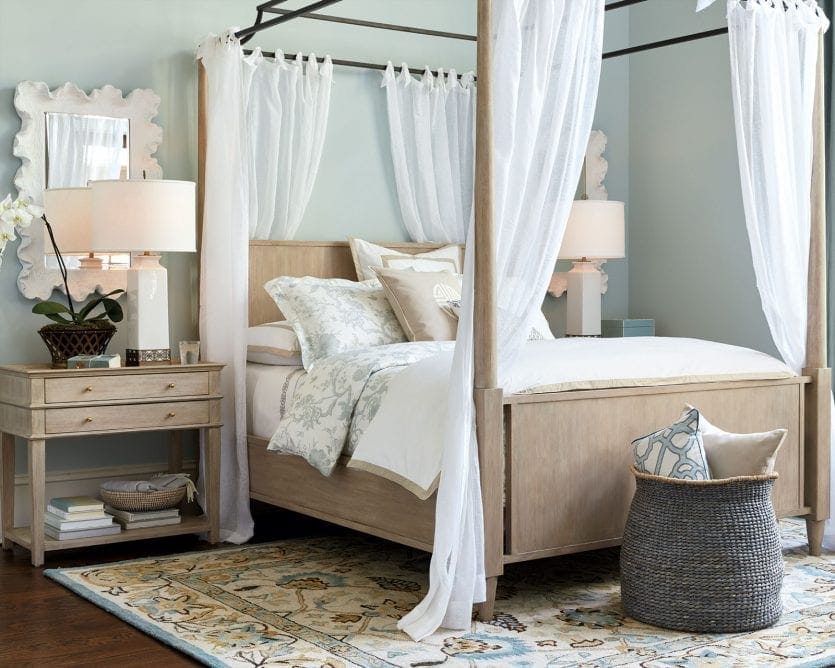 One design trend we’ve been the most excited about lately is the use of transitional furniture. It’s an incredibly diverse category that marries two distinct styles to create one inviting look.
One design trend we’ve been the most excited about lately is the use of transitional furniture. It’s an incredibly diverse category that marries two distinct styles to create one inviting look.
What is transitional furniture, you ask? Transitional furniture pieces blend contemporary and traditional furniture details for an overall effect that’s both refined and sophisticated, yet comfortable and classic. This is achieved through a variety of ways, but most notably through the strategic use of shapes and materials, like a traditional wingback chair with a more contemporary tapered leg or a sleek slipper chair with traditional nailhead trim.
We love to use transitional furniture because they modernize more traditional pieces you may already have. Mixing the two together feels fresh and modern and updates old favorites.
Here are 3 of our tried and true tips for mixing transitional, modern, and traditional furniture.
 1. Details Matter
1. Details Matter
One of the best things about transitional furniture is it brings out both the masculine and the feminine in its design. For that to effortlessly happen, the details have to be spot on. The use of rounded curves with straight lines is a great way to pull this off. Another is the use of eye-catching pieces of furniture and accessories like the deco-inspired Nadia Side Table with fluted details paired with the smooth curve of the Double Gourd Table Lamp.
 The marriage of rich woods and metal is a sure-tell of transitional furniture. We like to think of it as classic with as edge. Our Ryland table with its sleek brass legs, is the perfect way to make a classic walnut top feel contemporary.
The marriage of rich woods and metal is a sure-tell of transitional furniture. We like to think of it as classic with as edge. Our Ryland table with its sleek brass legs, is the perfect way to make a classic walnut top feel contemporary.
Our Metz “design-to-fit” dining tables also work, bringing simple, elegant metal bases together with lower profile, slender wood table tops. And you get to create exactly the right transition by choosing your base and top colors from a selection!

Details that are front-and-center can be used in surprising ways. It can be the choice of a pillow on a neutral couch or a side table with loads of interest.
2. Make It Bold
Pops of color are a great way to emphasize the transitional pieces. Rich eggplant or chic avocado feel unexpected which will energize your room and any traditional furniture pieces you’re looking to update. We especially love to lean on jewel tones for capturing this look.
Along with vibrant color choices, pattern plays an important role. No two alike is A-OK! A play between patterns from wall coverings to bedding to furniture is a key component to transitional style. The look is layered perfection with floral, stripes, and intricate design all ready to mingle.
As long as your color palette remains complementary, more is better when it comes to pattern!
 3. Mixed Mediums
3. Mixed Mediums
If a burst of color feels like too much, another way to anchor transitional style is to combine materials. In this bedroom, we used a wood bed with an iron canopy paired with interesting textiles – think soft rugs, flowy linen, and woven baskets – to seamlessly lean into this serene style.
When combining materials, you can focus on one furniture piece or just mix them in the same room. Rustic wood, contemporary acrylic, glazed ceramic, all bring interest to these spaces and help achieve that transitional style we dig.
Give transitional furniture a try in your own space, we think you’ll be surprised how versatile this style is for any room.












Millie
Thanks for the inspiration. I have a difficult time finding my style.